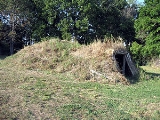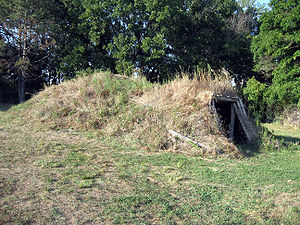
Phipps Site
Encyclopedia

Cherokee, Iowa
Cherokee is a city in Cherokee County, Iowa, United States. The population was 5,932 at the 2010 Census, up from 5,369 at the 2000 census. It is the county seat of Cherokee County. Cherokee is also the home of the Cherokee Mental Health Institute, under the Iowa Department of Human Services...
in Cherokee County
Cherokee County, Iowa
-2010 census:The 2010 census recorded a population of 12,072 in the county, with a population density of . There were 5,777 housing units, of which 5,207 were occupied.-2000 census:...
, Iowa
Iowa
Iowa is a state located in the Midwestern United States, an area often referred to as the "American Heartland". It derives its name from the Ioway people, one of the many American Indian tribes that occupied the state at the time of European exploration. Iowa was a part of the French colony of New...
, United States
United States
The United States of America is a federal constitutional republic comprising fifty states and a federal district...
.
The site consists of numerous earthlodges in what may have been a fortified village. Mill Creek Culture sites date to ca. AD 1100-1200 and consists of large nucleated sites utilizing Plains agricultural patterns. It was excavated by the University of Iowa in 1955, and has been reinvestigated several times.
Phipps was declared a National Historic Landmark
National Historic Landmark
A National Historic Landmark is a building, site, structure, object, or district, that is officially recognized by the United States government for its historical significance...
in 1964.
See also
- Earth shelteringEarth shelteringEarth sheltering is the architectural practice of using earth against building walls for external thermal mass, to reduce heat loss, and to easily maintain a steady indoor air temperature...
- MoundMoundA mound is a general term for an artificial heaped pile of earth, gravel, sand, rocks, or debris. The most common use is in reference to natural earthen formation such as hills and mountains, particularly if they appear artificial. The term may also be applied to any rounded area of topographically...
- Mound builder (people)
- Earthwork (archaeology)

